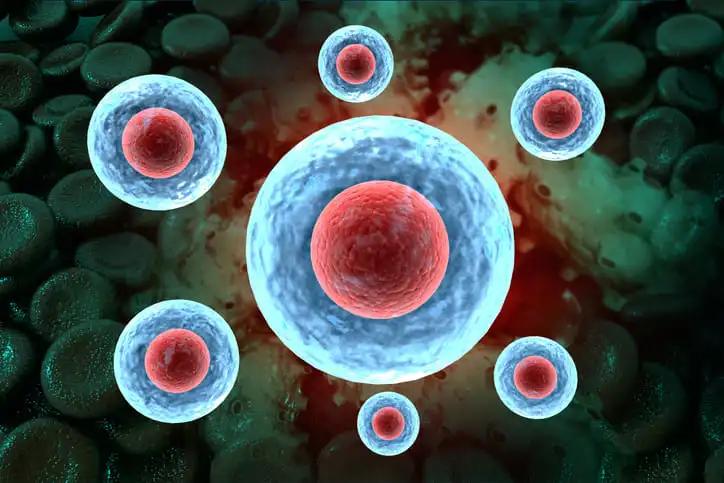KEY TAKEAWAYS
- The BEACON CRC phase III trial compared the characteristics and outcomes of mCRC patients who received 2L or 3L E+C or the control.
- The primary study endpoint was OS.
- The study found that E+C was an effective 2L or 3L treatment for BRAF V600E-mCRC, with similar characteristics and outcomes in both settings.
BRAF mutations are present in 8-12% of metastatic colorectal cancer(mCRC) patients(pts) and indicate a poor prognosis. Based on the BEACON study, encorafenib plus cetuximab (E+C) was approved for second(2L) and third-line(3L) treatment of BRAF V600E-mutant mCRC. Researchers aimed to compare the characteristics and outcomes of mCRC pts who received 2L or 3L encorafenib plus cetuximab (E+C) or control.
The study compared E (300 mg QD) plus C (400 mg/m2 initial dose followed by 250 mg/m2 weekly) with or without binimetinib (45 mg BID) to control (C plus irinotecan or FOLFIRI) in pts with BRAF V600E-mutant mCRC. The primary endpoint was OS. In this post hoc analysis, pts receiving E+C or control were grouped by line of therapy (2L and 3L).
About 291 pts underwent 2L treatment (n=146 E+C; n=145 control). Median age was 60 and 59 years, with 45.9% and 49.0% having ECOG PS 1 and 45.2% and 44.1% having ≥3 organs involved at baseline. For 3L treatment (n=74 E+C; n=76), the median age was 62 and 61 years, with 50.0% and 55.3% having ECOG PS 1 and 50.0% and 44.7% having ≥3 organs involved at baseline.
In 2L, the OS HR [95% CI] was 0.60 [0.46, 0.78]; P < 0.0001 (median OS: 7.9 and 4.8 months for E+C and control); the PFS HR [95% CI] was 0.43 [0.29, 0.66]; P < 0.0001 (median PFS: 4.2 and 1.5 months). In 2L, 31 (21.2%) vs 3 (2.1%) pts for E+C vs control were confirmed responders.
In 3L, 14 (18.9%) vs 1 (1.3%) pts for E+C vs control were confirmed responders. Among pts receiving 2L treatment, 91 (62.3%) in the E+C group and 77 (53.1%) in the control group received subsequent therapy. For those undergoing 3L treatment, 35 pts (47.3%) in the E+C group and 34 (44.7%) in the control group received subsequent therapy.
The most common all-causality adverse events (≥30% in the E+C arm) in 2L (E+C vs control) were diarrhea, nausea, dermatitis acneiform, abdominal pain, and fatigue. In 3L, these were fatigue, diarrhea, nausea, decreased appetite, and anemia.
The study found that E+C was an effective second or third-line treatment for BRAF V600E-mCRC, with similar characteristics and outcomes in both settings.
Source: https://www.annalsofoncology.org/article/S0923-7534(23)00643-9/fulltext
Clinical Trial: https://clinicaltrials.gov/study/NCT02928224
Tabernero J, Van Cutsem E, Yoshino T, Yaeger R, Wasan H, Desai J, Ciardiello F, Alkuzweny B, Zhang X, Guenzil C, Kopetz S. Clinical characteristics, efficacy, and safety in patients receiving second- or third-line encorafenib plus cetuximab (E+C) vs control for metastatic colorectal cancer (mCRC): BEACON CRC post hoc analysis. Annals of Oncology. 2023;29(Supplement 4): SO-29. https://doi.org/10.1016/j.annonc.2023.04.501



